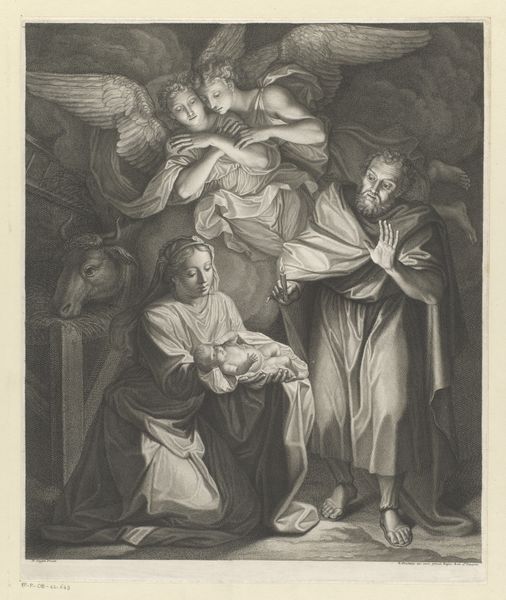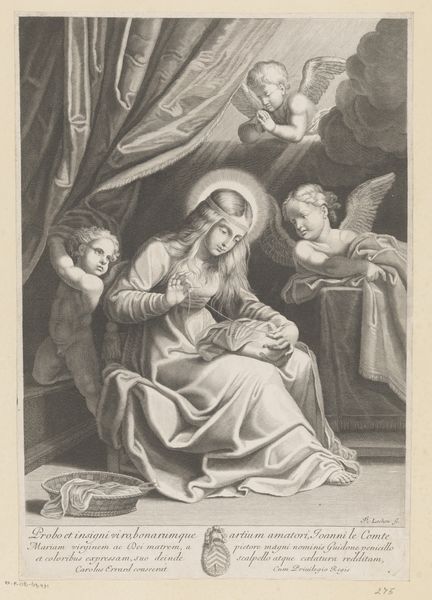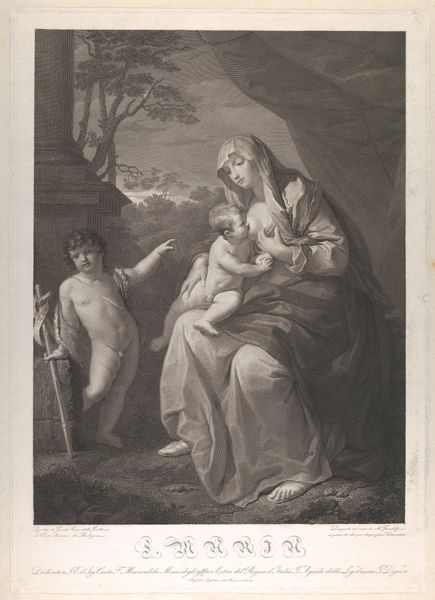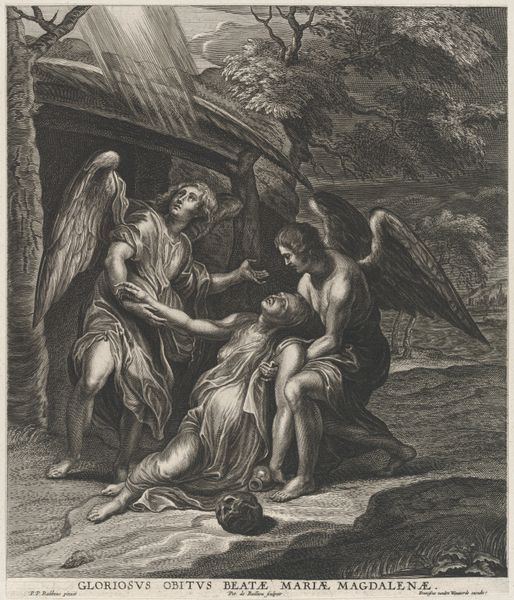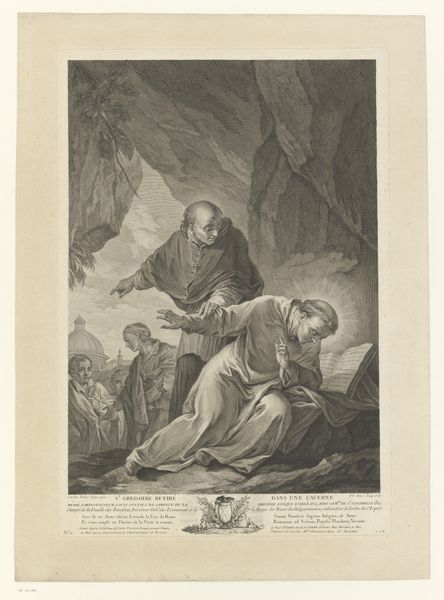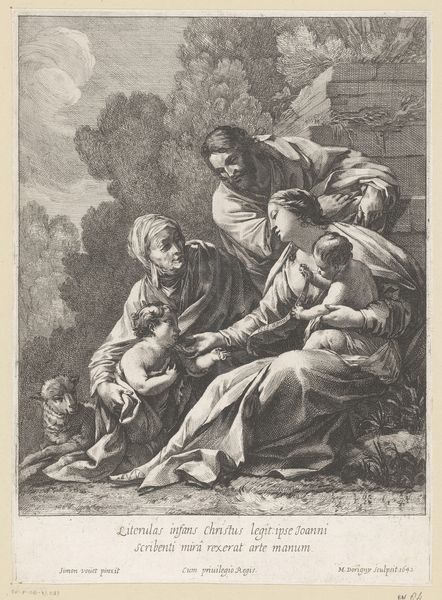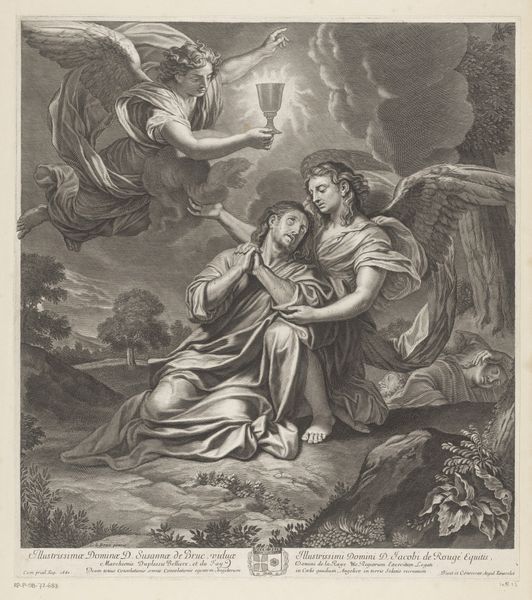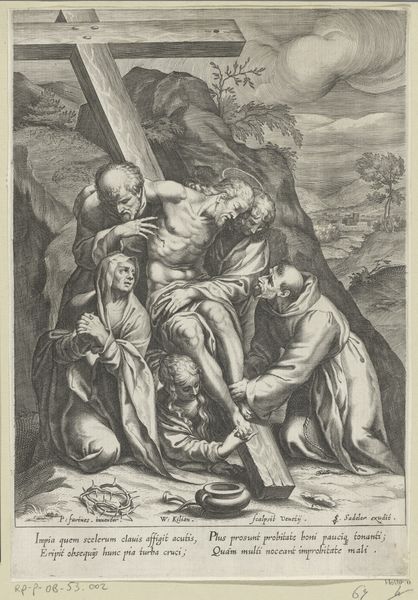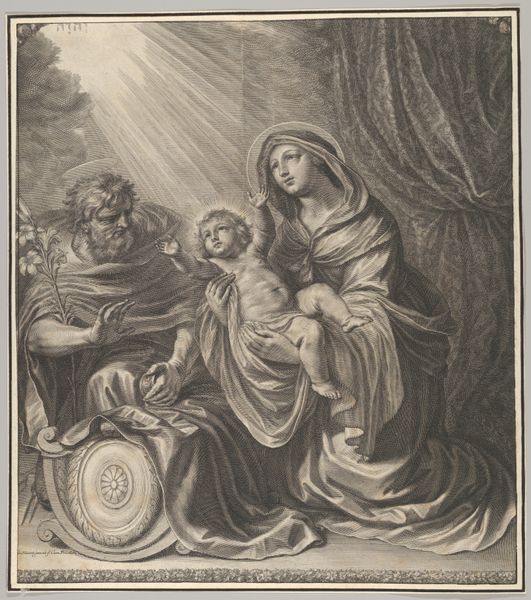
Dimensions: height 505 mm, width 355 mm
Copyright: Rijks Museum: Open Domain
Curator: This is a print, possibly from 1786, titled "Samma beweent de as van zijn zoon Benoni," attributed to Thomas Burke. The somber tonalities are immediately striking. Editor: Indeed, there's a palpable grief here, almost theatrical in its intensity. The figures seem to be arranged deliberately. Is it Baroque, would you say? Curator: Yes, its allegorical theme and figuration are rendered in a late Baroque style, yet leaning towards academic art in its careful composition. Note how the engraver uses line and tone to delineate the forms, emphasizing the drapery and musculature, common to this academic approach. Editor: The symbolism, however, feels deeply personal. The urn, prominently displayed, must hold significance. It's etched with Hebrew letters... Curator: It does seem the focal point. Visually, the light directs us to the grouping of figures by the urn, the texture and tonal contrast, where each person offers a distinct emotive reaction, constructing meaning by framing these responses. Editor: I’m particularly drawn to the young boy’s gesture. Hands clasped in what appears to be prayer, seeking solace. The looming figure behind him - is it an angel? It serves almost as a protector figure to him, juxtaposed with the mournful father to the left. Curator: Precisely. Its effect on viewers, no doubt, then and now, rests in its rendering of emotional experience, filtered and ordered through the symbolic codes of faith and bereavement. Editor: Considering how this visual language of sorrow connects us to historical experience, the enduring image-repertoire reminds us grief itself may be culturally framed and also a very human and individual sensation. Curator: Indeed. And perhaps Burke was less interested in the representation of actual grief and more concerned with presenting an exercise in technical virtuosity, deploying all manner of academic devices and strategies, allowing a reading to remain deliberately ambivalent, for further reflection.
Comments
No comments
Be the first to comment and join the conversation on the ultimate creative platform.



